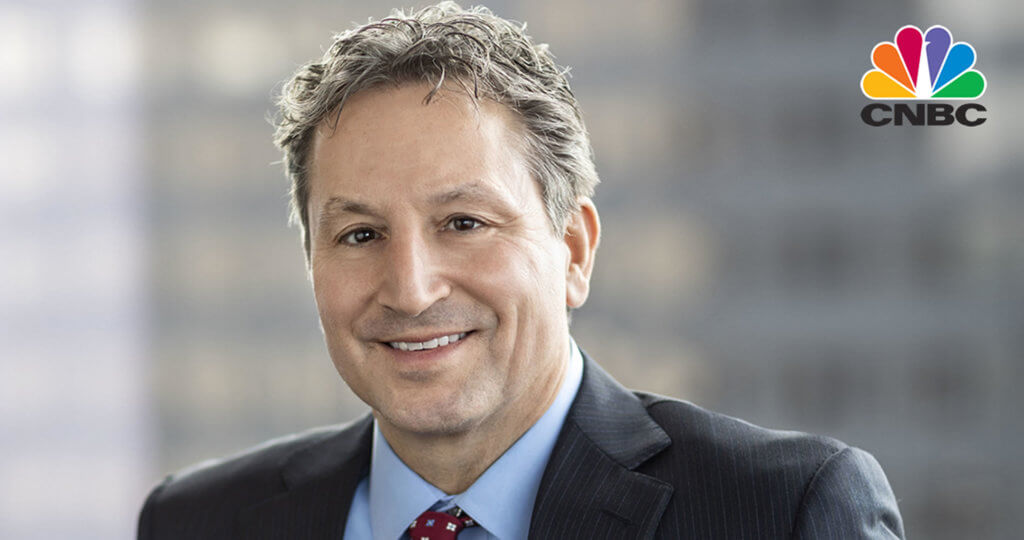Oakmark Equity and Income Fund - Investor Class
Average Annual Total Returns 06/30/13
Since Inception 11/01/95 10.63%
10-year 7.93%
5-year 4.80%
1-year 12.29%
3-month 0.99%
Gross Expense Ratio as of 09/30/12 was 0.78%
Past performance is no guarantee of future results. The performance data quoted represents past performance. Current performance may be lower or higher than the performance data quoted. The investment return and principal value vary so that an investor’s shares when redeemed may be worth more or less than the original cost. To obtain the most recent month-end performance data, view it here.
Quarter Review
Security returns were quite disparate across countries, economic sectors and asset types in the June quarter. After a strong start, security prices became erratic after comments from Federal Reserve Chair Ben Bernanke suggested an eventual reduction (a.k.a. tapering) in Fed asset purchases. Each time the Fed has ended a stimulus program (QE1, QE2, Operation Twist) the stock market has stumbled. The difference this time was that no actual reduction in monetary support has yet occurred.
The Equity and Income Fund gained 1% for the quarter, somewhat better than the breakeven outcome that Lipper reported for its Balanced Funds Index. For the calendar year to date the Fund has returned 7% compared to 6% for the Lipper Balanced Funds Index. The Fund’s fiscal year to date return was 9% while the Lipper Balanced Funds Index returned 7% for the period.
The quarter’s top contributors to Fund returns were UnitedHealth Group, General Dynamics, Northrop Grumman, TD Ameritrade and Carter’s. The detractors were Walter Energy, Devon Energy, EnCana, Nestle and Diageo. We write later in this report about the retreat from safety and income experienced in the quarter, and higher yielding issues such as Nestle, Diageo and EnCana felt that downdraft. Detractors from return for the calendar six months were Walter Energy, Cenovus Energy, EnCana, Oracle and Varian Medical Systems. The largest six-month contributors were UnitedHealth, Dover, TD Ameritrade, MasterCard and General Dynamics. For the fiscal nine months Dover, Flowserve, MasterCard, General Dynamics and Lear led the contributors list while Cenovus, Walter, EnCana, Devon Energy and Apache (sold) were the largest detractors. It is striking that all of the nine-month detractors are energy commodity producers.
Reject Safety, Embrace Volatility!
During the June quarter one of us used the title above for a speech. Investors often associate the word “volatility” only with downward price movements, and this makes some sense as the severity of stock market price movements tends to be larger for downward than upward change. Fortunately, the frequency of price movements tends to favor the upside. In any event, for what seems like forever we have been arguing that safety, stability and income have been over-valued, a strange turn of events for the managers of a fund with the word “income” in its name. It is often said that the curse of value investors is to be early, and it is irrefutable that we have been early in warning about the risks of heretofore safe investments. Nevertheless, the June quarter may have seen a trend change belatedly justifying our point of view.
Our partner Bill Nygren writes in his letter concerning a recent bond issue from Apple, an equity holding in the Oakmark Fund. At the time of this bond’s issuance, investors fought to obtain a piece of the offering as Apple was considered to be among the highest quality bond issuers. As Bill points out, the bond initially traded at a premium valuation but has subsequently dropped as much as 18% in price. High quality is not a defense against changes in the term structure of interest rates. Similarly, early in the quarter the U.S. Treasury’s 10-year note was priced to yield 1.63%. In the recent bond market discomfiture, its price had declined by more than 9% so that the yield had increased to 2.6%. It would take more than five years of income to offset this price decline. Again, we believe quality is not a defense if an issue is mis-priced or if investor sentiment erodes. The quarter’s fixed income difficulties were not limited to Treasurys as spreads widened for lower grade issues. The Fund’s defensive positioning (low duration, high quality) helped to limit damage in the period.
Of course, we actually do not have a formal interest rate forecast. Our effort is to understand value in bonds, in stocks, in all securities. In our opinion, 10-year Treasurys with yields below 2% do not provide any real return (i.e., return in excess of inflation) except in the direst economic circumstances. As well, their yield is insufficient to meet the needs of the Fund’s shareholders, if we are correct in our belief that the Fund’s shareholders require more than a 2% return to sustain their lifestyles. (Judging by shareholder e-mails, we feel very safe in stating that 2% is inadequate.) Whether the fixed income price correction that developed in the quarter proves to be sustained we cannot say. But we will continue to await better bond market opportunities to invest the Fund’s assets. Safety can prove to be ephemeral. In contrast, we believe equities offer prospects for return that justify their risks, leading us to maintain a maximum equity allocation in the Fund. There will be volatility, however, as June demonstrated. In this unusual environment, investors need to learn to tolerate, even embrace equity’s volatility, as hard as that may seem, remembering that volatility goes both ways.
Transaction Activity
Given that the Fund currently holds more than 50 equities, our trading activity should probably be seen to be average in the quarter. We added four new holdings and eliminated three. Perhaps the most surprising addition is General Motors. Historically we avoided General Motors because of the company’s difficult union relations and enormous underfunded post-retirement benefit liabilities. Times change, however, and GM today is a leaner, better-managed concern with considerable market opportunity. GM has rationalized its manufacturing footprint, reduced its cost structure and breakeven point, simplified its product portfolio and shifted investment to emerging markets. Nevertheless, the stock still suffers with the “Government Motors” taint, and the overhang of U.S. Treasury shares is not to be dismissed. We estimate that GM trades for less than the value of its much improved North American business, meaning that we obtain the impressive collection of international business and other net assets for free.
Next up alphabetically is Herman Miller, one of the largest manufacturers of office and institutional furniture in the world, perhaps best known as the maker of the iconic Eames lounge chair and Aeron desk chair. Herman Miller is a high quality business that generates impressive returns on capital in normal times, aided by its asset-light assembly model and returns-based incentive programs. But with roughly half of its sales coming from “project” business (tied to new office openings, relocations and major remodels), the company is highly cyclical, which can be seen in the peak-to-trough sales decline of 34% that occurred in fiscal years 2007 through 2009. While sales have begun to bounce back, office furniture spending tends to lag behind broad economic trends, so the industry hasn’t fully recovered from the recent recession. When sales return to more typical levels, we believe management’s earnings target—which is more than 50% higher than current earnings—will be eminently achievable.
We also initiated a position in National Oilwell Varco, one of the world’s largest providers of equipment for oil and gas drilling. About half of its business is drill rig equipment, and the other half is a diverse assortment of pipes, pumps, tools, consumables and a distribution business. The company has leading market shares across its various businesses, especially deepwater drilling equipment, which has led to strong growth and very high returns on invested capital. This growth has recently stalled as weak natural gas prices have led to a decline in the North American rig count. We expect the North American rig count to increase this fall. We also believe that deepwater rig equipment orders may remain strong for many more years as about one-third of the fleet is over 20 years old and will be retired over the next decade. Given our positive view on the demand for rig equipment, the sustainability of the company’s competitive position and its discounted valuation, we believe the stock to be undervalued.
The final new purchase was U.S. Bancorp, the fifth largest U.S. bank in terms of deposits. Seven years ago we determined that investing in banks was too risky for a conservative Fund. Over the past four years the efforts of the Federal Reserve to rehabilitate the banking sector have succeeded to the point that we again feel comfortable increasing the Fund’s exposure to the industry. U.S. Bancorp is a high quality institution in terms of assets, and fees make up nearly half its revenues. The company also has a large payment processing subsidiary, a business deserving of an above average valuation. We perceive management to be both conservative and shareholder-friendly.
We eliminated the Fund’s holdings of C.R. Bard, Pharmerica and Walter Energy, which together made up just over 1% of the Fund’s assets at the beginning of the quarter. In our opinion Bard and Pharmerica, both positive contributors to Fund return, were likely to struggle to sustain historic earnings growth rates as health care regulation and payment systems evolve. With Walter we made a variety of mistakes, but in particular we underestimated how much China’s aggressive investment in steel production had distorted that industry. As demand for China’s steel diminished, the impact on the price of metallurgical coal significantly impaired Walter’s prospects.
This is the first report to reflect the efforts of the new portfolio management team. All have had a part in constructing this letter, and we hope that you enjoy the combination of different voices.
We are all honored that our shareholders entrust their assets to this Fund. We thank you and welcome your questions and comments.
As of 6/30/13, UnitedHealth Group, Inc. represented 3.1%, General Dynamics Corp. 3.0%, Northrop Grumman Corp. 1.4%, TD Ameritrade Holding Corp. 1.6%, Carters, Inc. 0.9%, Walter Energy, Inc. 0%, Devon Energy Corp. 2.4%, Encana Corp. 1.3%, Nestlé SA – ADR 2.5%, Diageo ADR 1.9%, Cenovus Energy, Inc. 1.5%, Oracle Corp. 2.2%, Varian Medical Systems, Inc. 1.2%, Dover Corp. 3.3%, MasterCard, Inc., Class A 1.7%, Flowserve Corp. 2.0%, Lear Corp. 1.4%, Apache Corp. 0%, Apple, Inc. 0%, General Motors Co. 2.6%, Herman Miller, Inc. 0.1%, National Oilwell Varco 1.7%, U.S. Bancorp 0.9%, CR Bard, Inc. 0%, and PharMerica Corp. 0% of the Oakmark Equity and Income Fund’s total net assets. Portfolio holdings are subject to change without notice and are not intended as recommendations of individual stocks.
For a full list of The Oakmark Equity and Income Fund’s holdings as of 6/30/13, click here.
The Lipper Balanced Funds Index measures the performance of the 30 largest U.S. balanced funds tracked by Lipper. This index is unmanaged and investors cannot invest directly in this index.
Investing in value stocks presents the risk that value stocks may fall out of favor with investors and underperform growth stocks during given periods.
The Fund invests in medium- and lower-quality debt securities that have higher yield potential but present greater investment and credit risk than higher-quality securities, which may result in greater share price volatility. An economic downturn could severely disrupt the market in medium or lower grade debt securities and adversely affect the value of outstanding bonds and the ability of the issuers to repay principal and interest.
The discussion of the Fund’s investments and investment strategy (including current investment themes, the portfolio managers’ research and investment process, and portfolio characteristics) represents the Fund’s investments and the views of the portfolio managers and Harris Associates L.P., the Fund’s investment adviser, at the time of this letter, and are subject to change without notice.






